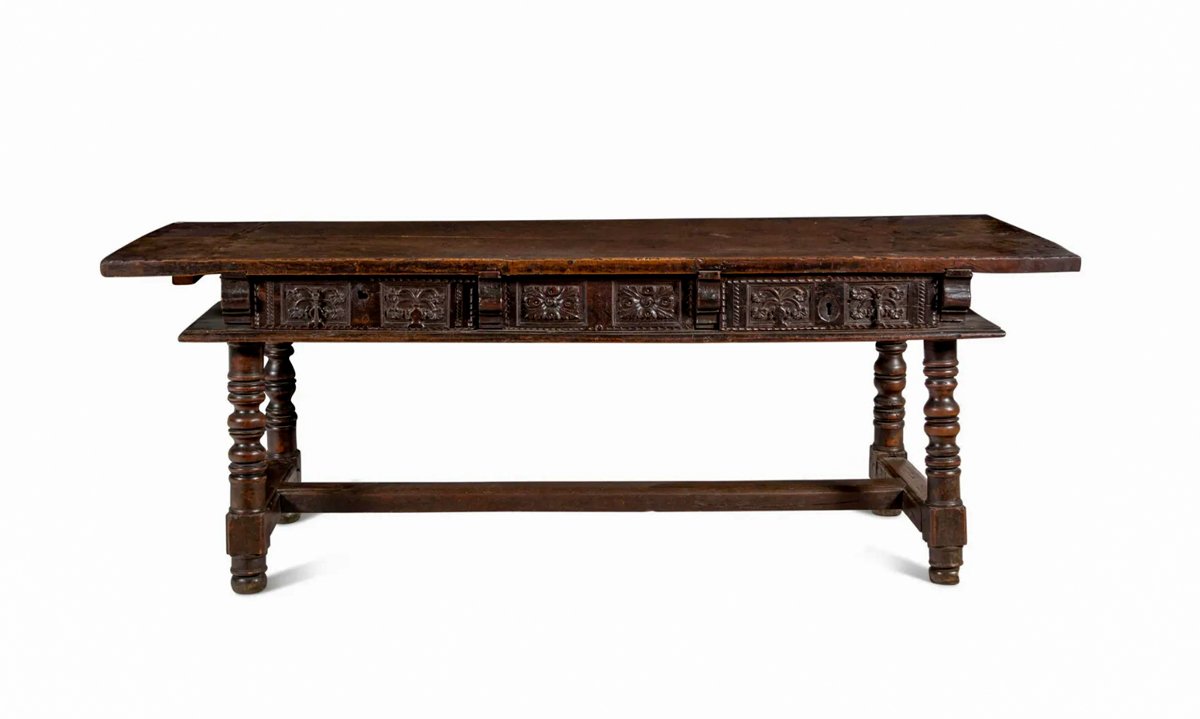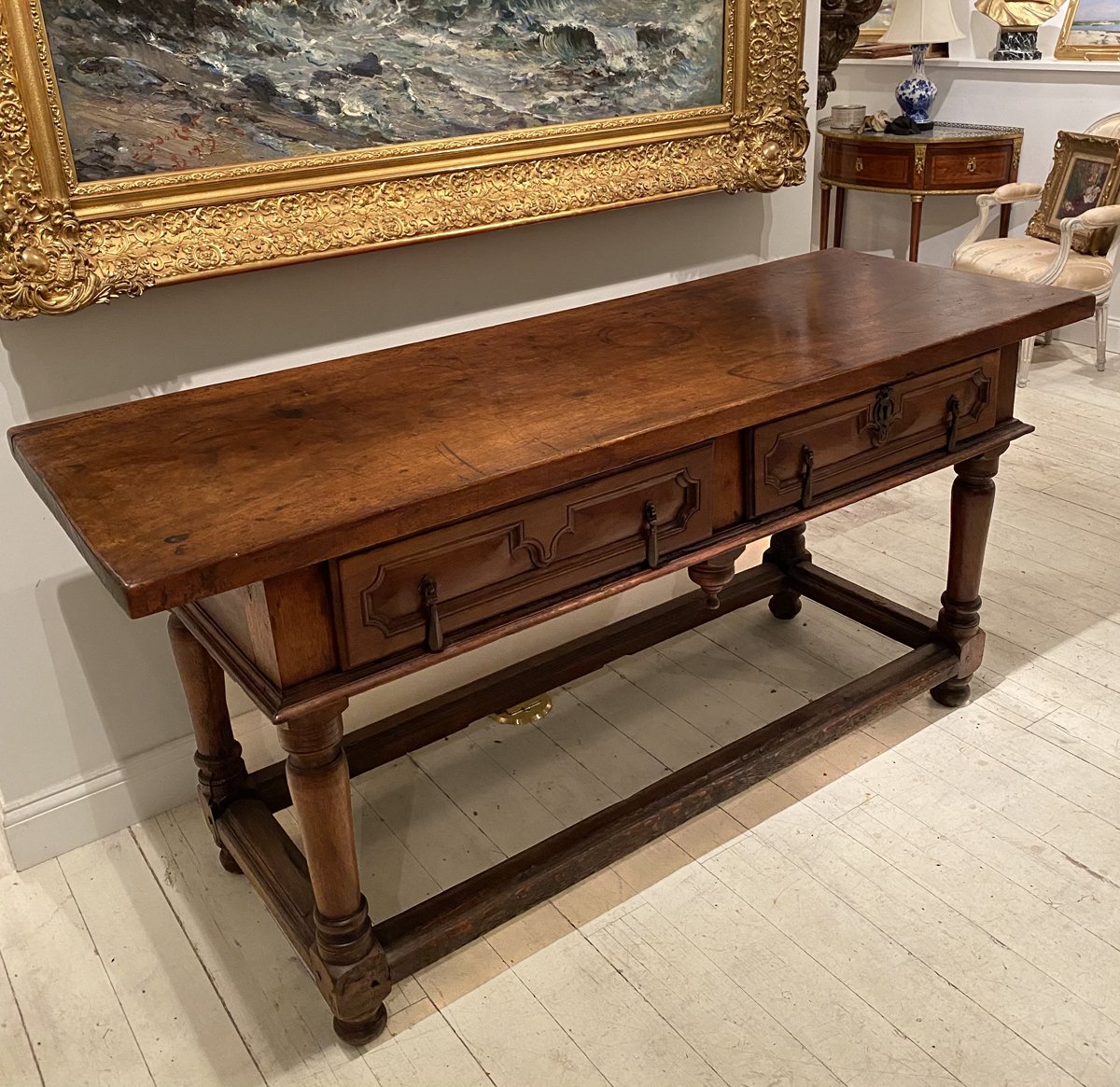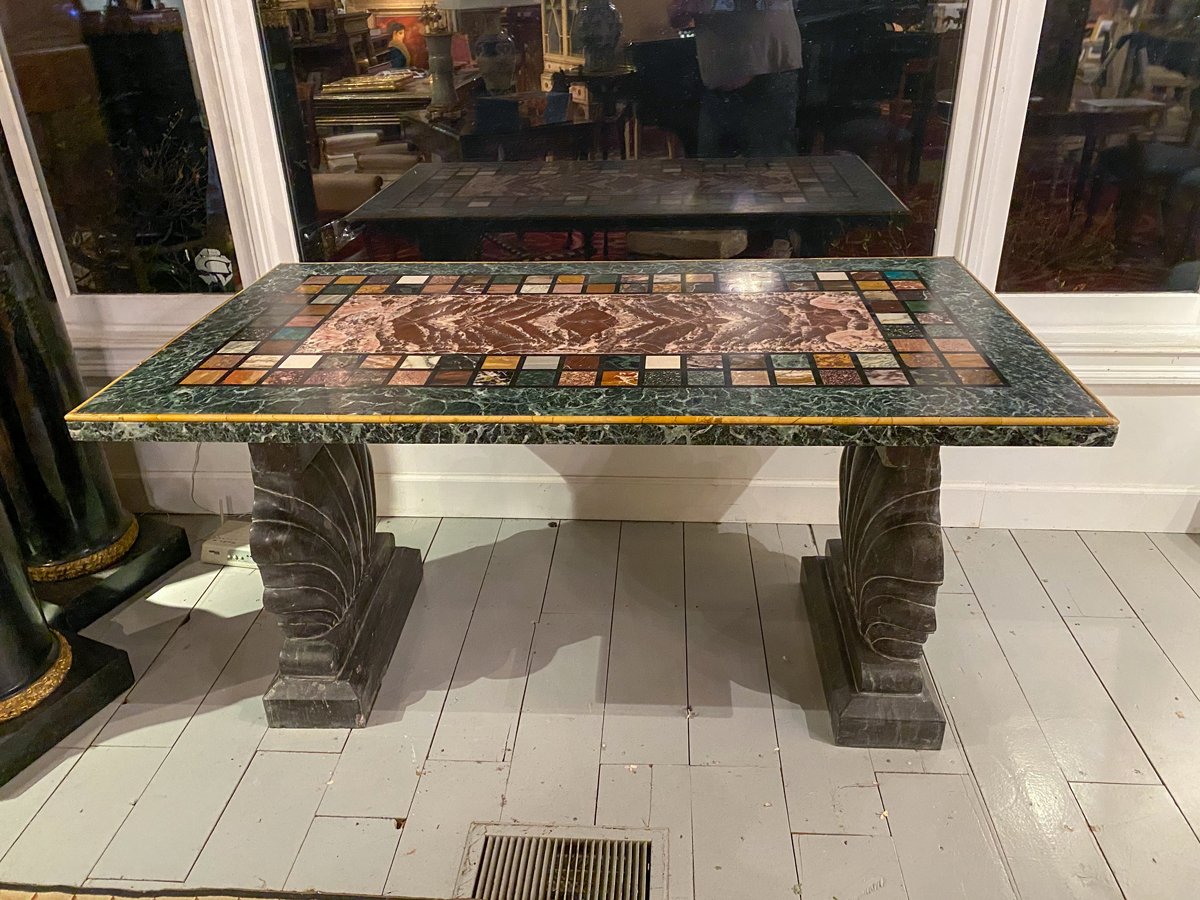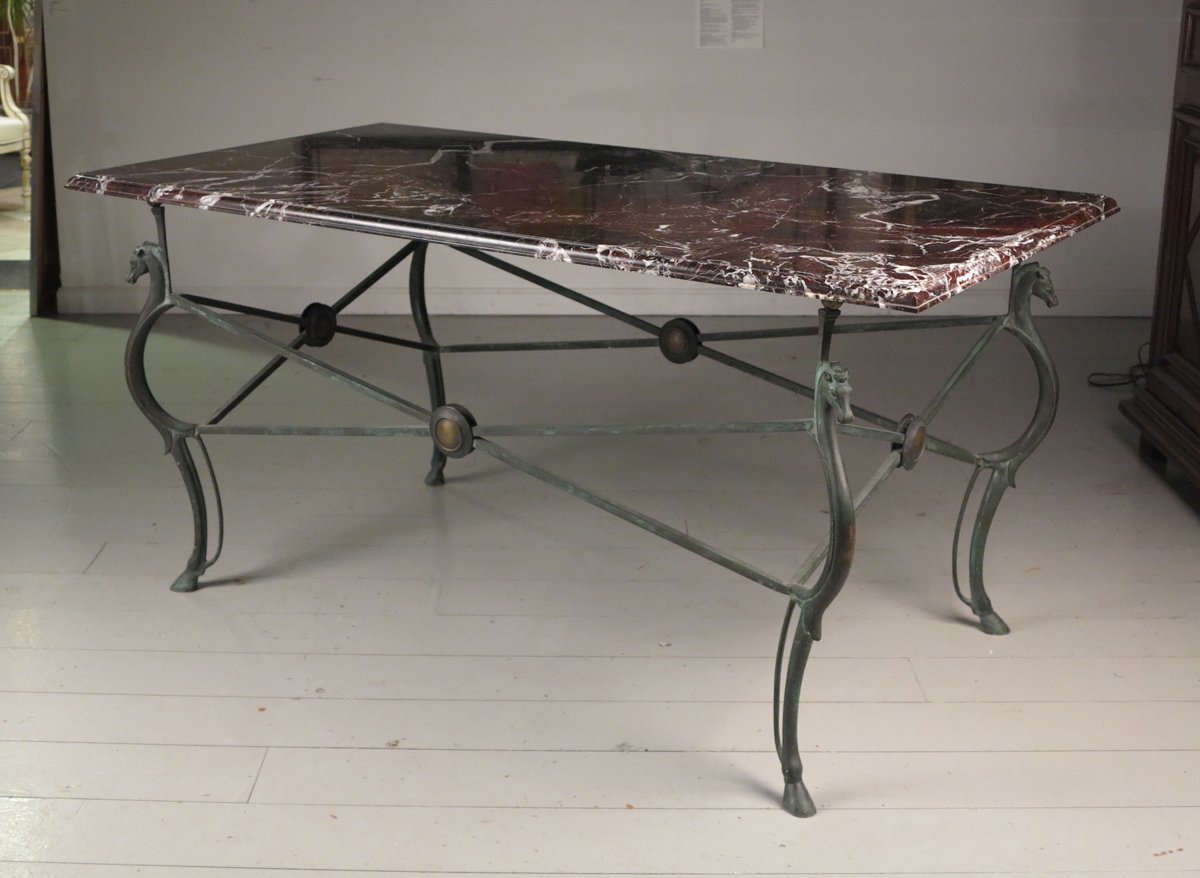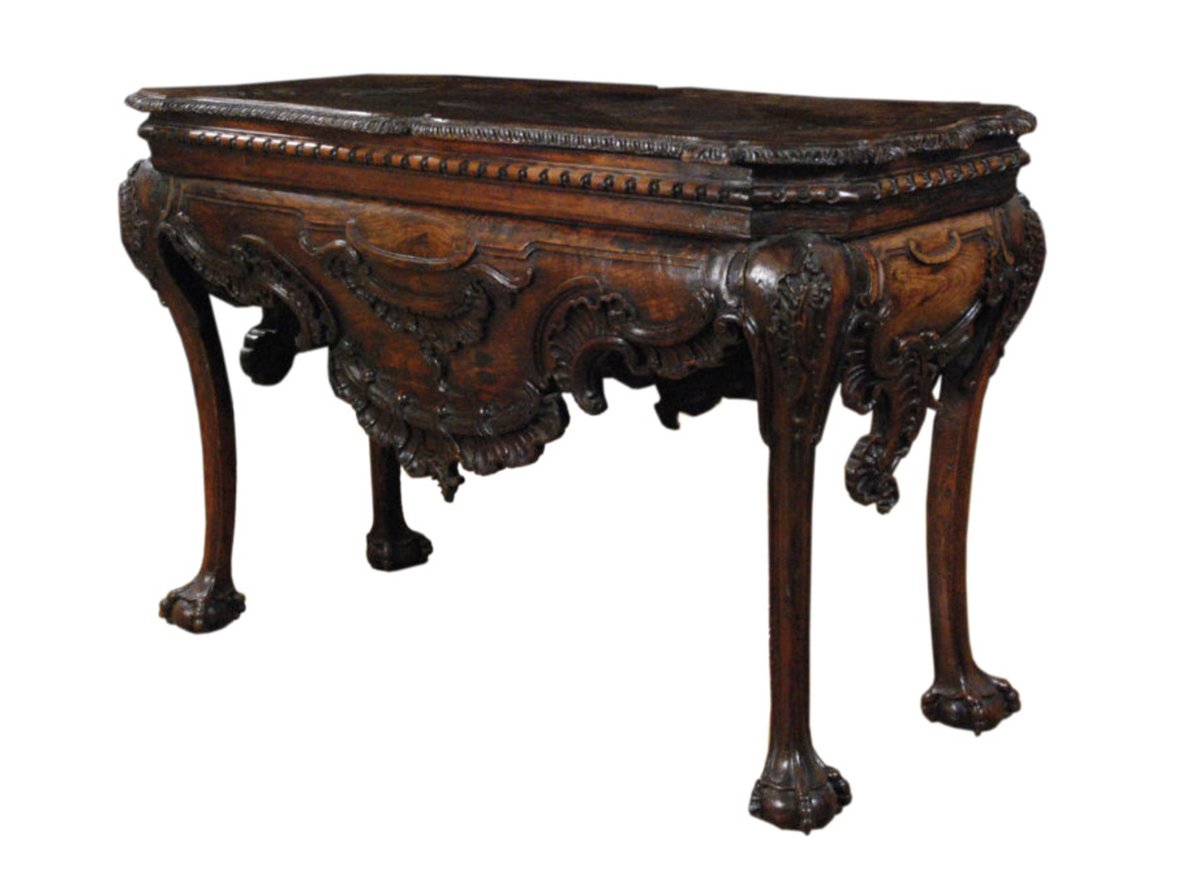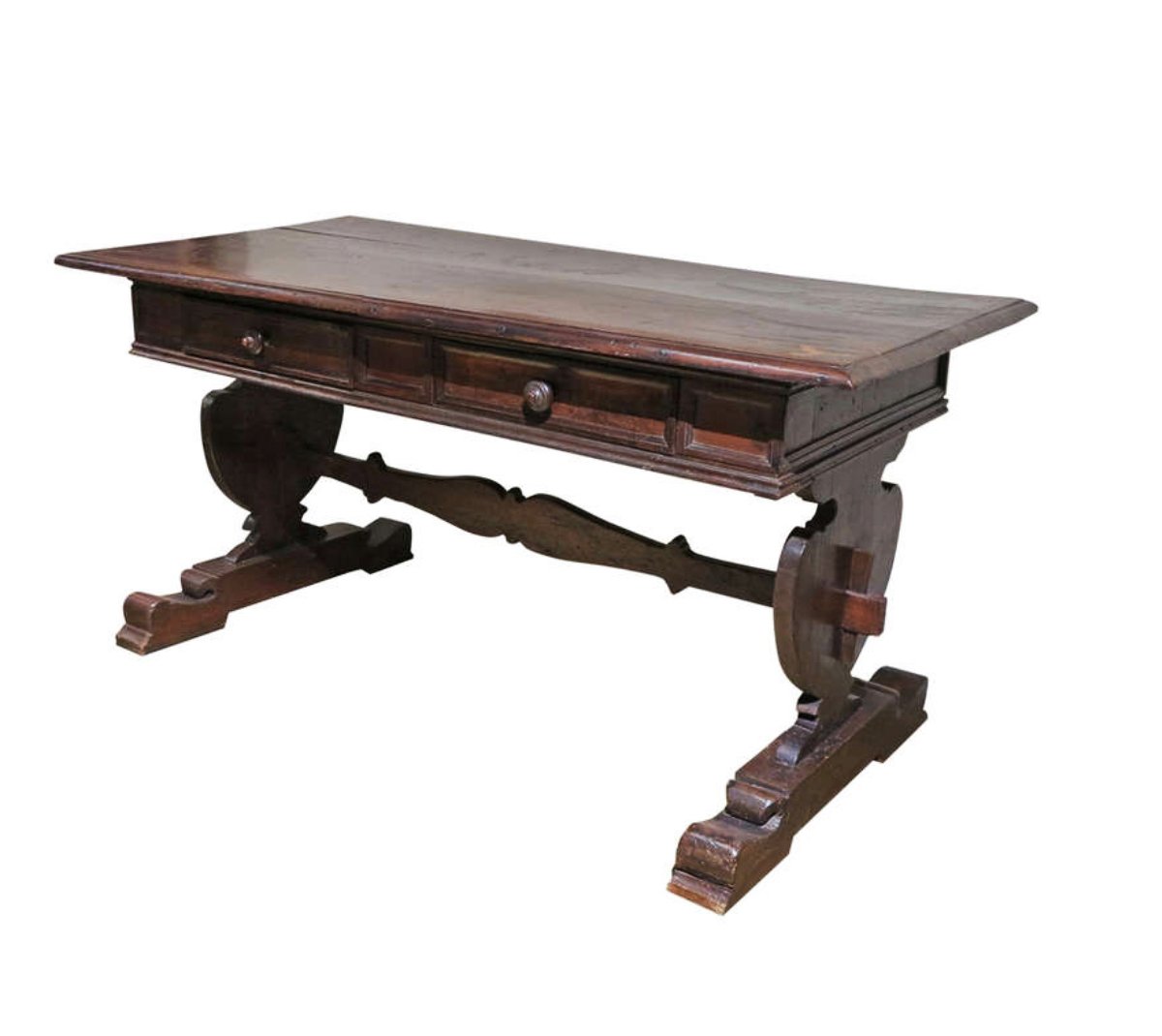Library Tables
A Rare Spanish Walnut Refectory Table
17th CenturyHeight 34 in. Width 95 in. Depth 33 in.
Inventory Number: Tab350
Details
A Rare Louis XIII Walnut Table
17th CenturyThe top extending over a carved two-drawer frieze with a central finial on turned columnar legs joined by a lower stretcher.
Height 33 in. Width 68 ½ in. Depth 24 in.Inventory Number: Tab355
Details
An Unusual “Specimen Petra Dura” Marble Top Table
19th CenturyResting on Very Rare Shell form Support Bases
Possibly Florence, Italy
Inventory Number: Tab342
Details
A Spanish Baroque Walnut Table
18th CenturyThe top extending over a carved three-drawer frieze with stylized vine motif, on turned columnar legs joined by a lower stretcher.
Height 32 in. Width 66 in. Depth 31 in.Inventory Number: Tab334
Details
A Fine & Rare Horse Head Bronze Table w/Rosso Imperio Marble Top Gilbert Poillerat Designer, France
Circa 1935
20th Century
There have been many important French designers associated with Art Deco and through the 1930’s, ‘40’s and beyond who worked in wrought iron. One usually thinks of Edgar Brandt, Raymond Subes, and Paul Kiss. For quite a while, when Art Deco was enjoying its first flush of recognition in the 1970’s, Gilbert Poillerat remained relatively unknown. This would soon change as the natural progression of design exploration began to move into the 1930’s and beyond, and Poillerat would emerge as one of the most original and important designers of his time.
Gilbert Poillerat was born in 1902 in a small town in France that, oddly, had three names - Mer, Loir et Cher. Like many other furniture designers, he attended the famed École Boulle, where he trained as a metal chiseler and engraver, graduating in 1921. Following his graduation, he worked with arguably the best and most influential wrought-iron master - Edgar Brandt. He worked for Brandt for over seven years in both design and production. There can be no doubt that this time was hugely important, not only in furthering his training and perfecting his technique, but also exposing him to the new ideas that had blossomed forth during the Art Deco movement, when wrought-iron escaped the constraints of tradition that had kept it static for so long.
Height 33 in. Width 67 in. Depth 36 in.Inventory Number: Tab212
Details
A Spanish Baroque Walnut Table
17th CenturyThe rectangular top raised on shaped trestles joined by wrought-iron stretchers
Inventory Number: Tab331
Details
An Italian Baroque Walnut Center/Library Table
17th CenturyThe rectangular top above three paneled drawers, raised on shaped baluster legs joined by stretchers.
Height 31 in Width 90 in. Depth 32 in.Inventory Number: Tab 310
Details
A Rare English Oak Joined Table
17th CenturyThe rectangular plank top above a gadrooned frieze carved with rosettes, on baluster-shaped legs and conforming stretcher
Height 31 ½ in. Length 145 in. Depth 34 in.Inventory Number: Tab 92
Details
An Important & Rare Rococo Walnut Center Table
18th CenturyWith a shaped top over a foliate carved apron centered by a cabochon cartouche, on carved cabriole legs ending with claw feet.
Height 35 ½ in. Width 56 in. Depth 25 ½ in.Inventory Number: Tab28
Details
An Italian Walnut Baroque Table
17th CenturyThe rectangular molded top with inlaid decorations at the corners over two drawers all resting on a trestle base.
Height 31 1/2 in. Width 32 1/2 in. Lenght 62 in.Inventory Number: Tab128
Details


